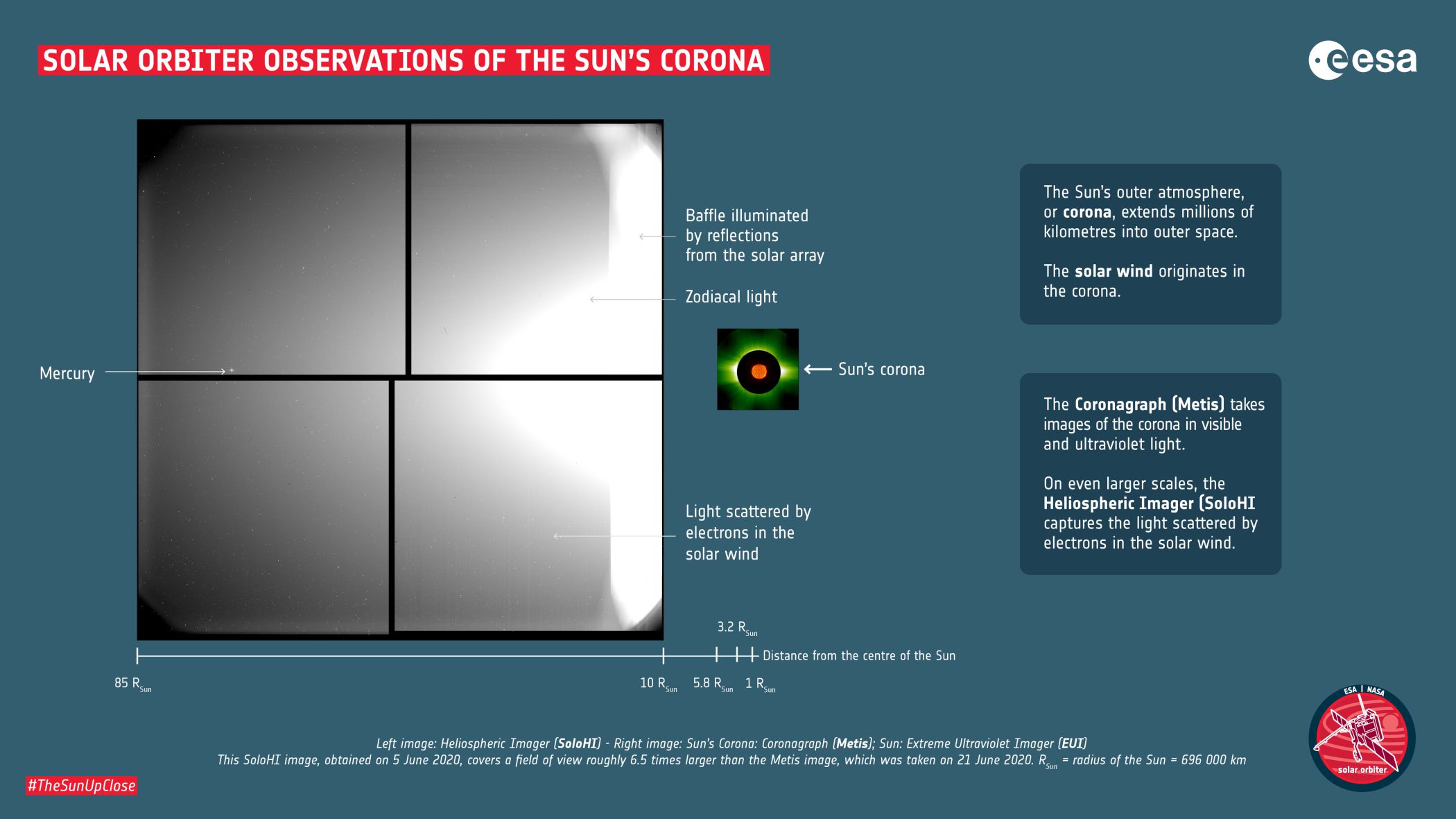In February, Solar Orbiter set out to discover the mysteries of the sun, taking Portuguese technology on board. After making a first approach about 77 million kilometers away from the star, the first images captured by the mission now arrive on Earth and the European space agency has prepared a special online transmission about the discoveries made, that SAPO TEK is to follow.
"We have never been so close to the Sun to capture images", explainsDaniel Mller, ESA Solar Orbiter Project Scientist, at the online conference, also stating that for this quality I need to go to Space. Even so, he argues that these data collected are only a first step in this mission, since the probe will still get closer to the Sun, reaching the closest point in two years. We are all really excited about these first images, but this is just the beginning, he says.
Other missions, such as NASA's Parker probe and BEPI Colombo, have been collecting data from the Sun, moving even closer to the central star of our solar system, but due to the very high temperatures they have no cameras that point directly at the Sun. But the information will be used together to better understand the phenomenon.
Among the discoveries that are expected to revolutionize is the fact that scientists hope to be able to understand how the Sun's magnetic field works when the Solar Orbiter is able to stalk the Sun's poles. "We think the magnetic field is responsible for the activity of the Sun but we don't know how it works (…) We think it has to do with a similar link to what exists inside the Earth but we are not sure ", defends Sami Solanki, principal investigator of PHI and Director of the Max Planck Institute for Research in Solar Systems in Gttingen
The images collected by the probe's instruments take about a week to reach our planet, with a daily window of nine hours to download them. When the probe gets closer to the Sun, the images may take several months to arrive, although it has the capacity to store them and then send them when it approaches Earth again.
No other probe has been able to capture images of the Sun's surface at such a short distance. The photographs reveal phenomena that were not previously visible in detail to scientists, such as the presence of omnipresent mini solar flares, called bonfires.
Captured by the Extreme Ultraviolet Imager (EUI) during the first period of the Solar Orbiter, at a distance of 77 million kilometers from the Sun, the fires can be described as a kind of "relative" of the solar flares that can be observed from Earth .
See the images of the phenomenon captured by Solar Orbiter
David Berghmans, EUI principal investigator at the Royal Observatory of Belgium explains that the Sun may appear peaceful at first glance, but when we look in detail, we can see these miniature flames everywhere.
Although scientists are still unsure whether campfires are a smaller version of solar flares or if they have a different origin, there are theories that they may be contributing to the warming of the Sun's corona, a phenomenon that has been puzzling researchers for several decades.
Can bonfires be the key to understanding the heating of the Sun's corona?
Frdric Auchre, another of the EUI's principal investigators at the Space Astrophysics Institute in France, campfires may seem insignificant, but the sum of their effects may play a pivotal role in warming the solar corona.
Still, the conclusion may be a little premature. At least what Yannis Zouganelis, an associate scientist with ESA's Solar Orbiter Project, defends, but the researchers hope to be able to find answers by comparing the observations with the measurements of the probe's other instruments.
ESA explains that the solar corona, the outermost layer of the Sun's atmosphere, extends for millions of kilometers in space. The temperature recorded on the surface of the main star of our Solar System, which is around 5500C, manages to be cooler than that of the corona, capable of reaching temperatures above one million degrees Celsius.

What is happening on the hidden side of the Sun and what is the mechanics of solar winds?
Through the Polarimetric and Helioseismic Imager (PHI), Solar Orbiter is able to make high-resolution measurements of the lines of the magnetic field on the surface of the sun.
The instrument was designed to monitor the sun's most active regions, where the strongest magnetic fields can generate solar flares. The energetic particles released by the phenomenon then interact with the Earth's magnetosphere and can give rise to magnetic storms with a strong negative impact on the telecommunications and energy networks on the ground.
Since Solar Orbiter is at a different observation angle than what was already known, it is now possible to observe the active region that was not visible from Earth and measure its magnetic field closest to the surface, says Sami Solanki, principal investigator of the PHI and Director of the Max Planck Institute for Solar Systems Research in Gttingen, Germany.
